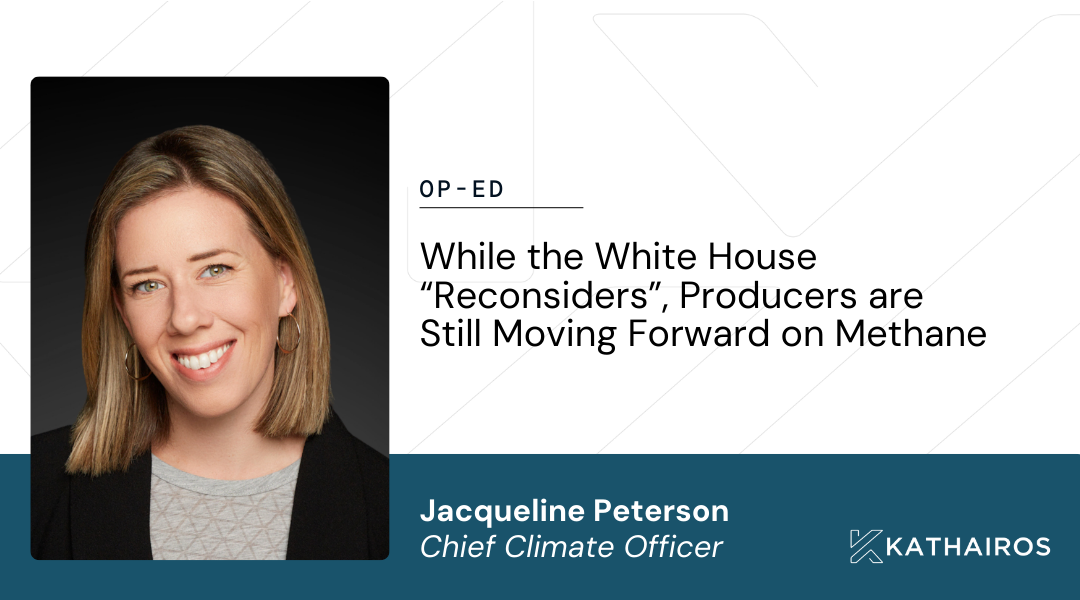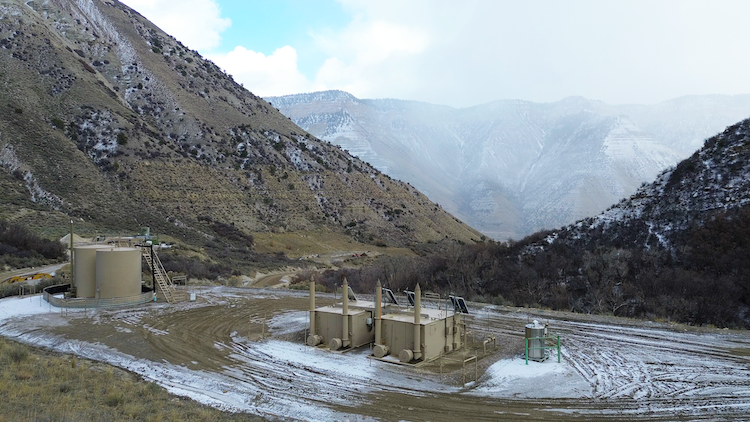
Kathairos has emerged as the leading North American solution for methane elimination from pneumatics, with more than 1,000 systems in operation across North America and over 40 major oil and gas producer partners.
In this post
More than 12,000 offshore oil and gas platforms exist worldwide, with many nearing the end of their operational lifetimes as they continue to drain reservoirs of fossil fuels from beneath the ocean floor.
These rigs eventually become defunct when they produce too little fuel for extraction to be profitable.
When the fuel stops flowing, what’s the plan?
On one hand, it would be far too labour-intensive and expensive to remove these platforms from the ocean altogether. On the other, leaving them behind to rust and fall into disrepair is an environmental hazard that could pose a serious threat for marine life and ecosystems.
From rigs to reefs
There seems to be one way that these old rigs can be useful: subsurface structures provide the ideal skeleton for new coral reefs.
As it turns out, offshore rigs can in fact serve as some of the most bountiful human-made marine habitation.
The practice of transforming decommissioned oil and gas platforms into reefs dates back over 40 years in the United States, with the signing of the National Fishing Enhancement Act. Legislators recognized the benefits artificial reefs provided and encourage states to draft plans to turn defunct rigs into reefs.
The five coastal states on the Gulf of Mexico — Alabama, Florida, Louisiana, Mississippi and Texas — all have well-established rigs-to-reefs programs, which have helped convert more than 500 oil and gas platforms into artificial reefs.
In these states, oil and gas companies seal oil wells once they stop drilling operations, and then make a choice to either remove the entire platform or convert the site into an artificial reef by keeping the subsurface structure intact.
Reefing is an attractive option for oil and gas companies as it is significantly less expensive than complete removal, saving companies millions of dollars in decommissioning costs.
Half of the savings from reefing are used to further the state’s artificial reef program, which works to maintain platforms, promote marine conservation efforts and helm education initiatives.
Marine biodiversity in artificial reef systems also directly contribute to local economies, as they are hotspots for recreational activities including diving, snorkelling and fishing.
Artificial reefs: a biodiversity hotspot
Offshore rigs are among the most productive fish habitats in the world, providing marine wildlife populations with food, shelter from predators and safe breeding grounds.
Because of this, the California-based organization Blue Latitudes aims to spread the practice of reefing to other parts of the world, having successfully converted defunct rigs into reefs in Southeast Asia and West Africa.
Through raising awareness about the benefits of rigs and persuading companies and governments to designate defunct sites as permanent reefs, the organization has helped prevent more than a dozen rig marine ecosystems from being wiped out.
"We're trying to help the general public understand that conservation isn't always just about saving the whales," remarks Amber Sparks, a marine scientist who works for Blue Latitudes. "There are other ways we can look at complex ideas in our oceans, such as repurposing manmade structures like artificial reefs."
For some species, rigs serve as even better nurseries than natural reefs. Towering pylons that can be as tall as 500ft provide perfect spawning grounds for fish larvae. In fact, artificial reefs have helped restore populations of critically endangered species, such as the bocaccio rockfish found in the West Coast of the United States.
In one study, significantly more juvenile rockfish were found in artificial reefs than nearby natural reefs, with over 400,000 juvenile bocaccio observed living in and around six platform systems. This figure was enough to boost the adult stock of the Pacific Coast population by around 3%.
Not only that, but studies showed clear evidence that marine species are drawn to platform habitats. One study involved attaching sensors to fish living by three oil platforms, which were then relocated to a natural reef located up to 18km away.
Movement monitoring showed that 25% of fish across all species returned to their home oil rig platforms within two years, with most others migrating back during non-breeding seasons.
One reason for this concerns a value that rig platforms provide, which is rarely found in open waters: height. Platforms acts as pinnacles and allow fish to move into deeper water as they mature without having to venture away from their habitat.
In natural reef systems, fish living in shallow reefs will leave their habitat when they are fully grown and venture out to open sea. Fish found in defunct rigs simply have to travel down the platform, without risking the loss of protection from their habitat.
Convincing California
Many scientists are advocating for Californian platforms to be preserved and protected as artificial reefs, given their high biodiversity and the well-established marine ecosystems that have formed around them.
The next decade could see a significant number of oil rigs in California reefed, as eight are no longer operational and more are set to be decommissioned in the next several years.
The biggest challenge? Convincing Californians. California is the state with the most ambitious climate goals in the United States, with a goal of slashing emissions by 40% by 2030 compared with 1990 levels, and a secondary goal of using 100% electricity from carbon-free sources by 2045.
Californians are very opposed to offshore oil and gas ventures, and many want their coastlines free of oil and gas platforms.
The lack of public support for reefing among Californians is not very surprising, given that oil and gas made up 34% and 21% of global CO2 emissions respectively in 2019. A significant portion of these emissions originated from offshore rigs.
Blue Latitudes stresses that rigs-to-reefs programs do not aim to boost industry, but rather work primarily to protect valuable marine habitats by providing an alternative to complete platform removal.
The complete removal of California’s oil and gas platforms would result in the loss of 27 well-established marine ecosystems, some of which are taller than the Eiffel Tower and reach depths of 1198ft.
Oil and gas rigs may have a finite operational lifetime, but what's to say they can’t provide considerable benefits even after they’ve depleted their fossil fuel reservoirs?
Who knows… allowing artificial reefs to proliferate from defunct platforms may just be one of many pieces of the puzzle we need to save our oceans.
Explore more posts from Kathairos
.jpg)
Decarb Digest, Issue 01: Discover Why Energy Leaders Aren’t Waiting on Washington

Op-Ed: While the White House “reconsiders”, producers are still moving forward on methane

